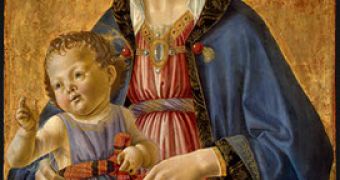An art historian at the University of East Anglia has teamed up with a leading neuroscientist and created a new academic discipline: neuroarthistory. This new discipline aims at understanding what happens in the artists' brains. What makes an artist such a special individual?
Prof John Onians of UEA's School of World Art Studies wants to use the new brain scanning techniques such as fMRI to answer questions such as: * What happens in the brain of the modern artist as he or she works? * What happened in the brain of an artistic genius like Leonardo Da Vinci? * How do the brains of amateur and professional artists differ? * Why do artists in certain times or places have certain visual tastes?
"Until now we had no way of knowing what went on inside the artist's brain - although Leonardo tried, using anatomy and observation. But now we are finally unlocking the door to this secret world," Prof Onians said. "We can also use neuroarthistory much more widely, both to better understand the nature of familiar artistic phenomena such as style, and to crack so far intractable problems such as 'what is the origin of art?'"
The new field tries to understand, for instance, what drove the first artists 32,000 years ago to create the painings in the Cave of Chauvet. In what sense did they differ from previous people? And why do their paintings look the way they do?
Neuroarthistory also aims at figuring out some of the causes that can lead to differences between the styles of painting. For example why did the Early Renaissance Florentine painters make use of lines more predominantly, while the Venetian artists of the same period relied more on colors? Onians thinks that some of these differences can be tracked to the exposure to different natural and manmade environments.
These exposures influenced the artists' visual preferences, a consequence of the 'neural plasticity' of their brains. Essentially, this means that the environment has trained them into liking certain things and disliking other things. Whether this is so or not can be discovered with the help of brain scans.
Onians noted an interesting difference between European and Chinese artists: the Europeans usually stood before vertical canvases while the Chinese sat before flat sheets of silk or paper. This must have had certain influences on the mirror neuronal system.
"The most interesting aspect of neuroarthistory is the way it enables us to get inside the minds of people who either could not or did not write about their work," said Prof Onions. "We can understand much about the visual and motor preferences of people separated from us by thousands of miles or thousands of years."
Prof. Onians works together with Prof Semir Zeki FRS of University College London and plan to apply the various finding to case studies, from prehistory to the present. It remains to be seen whether this approach will be successful or not.

 14 DAY TRIAL //
14 DAY TRIAL // 
